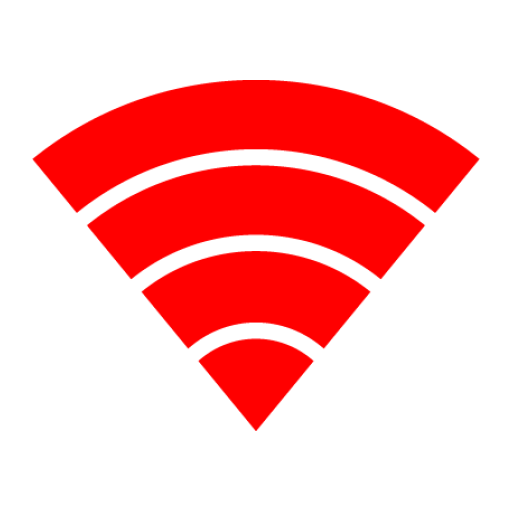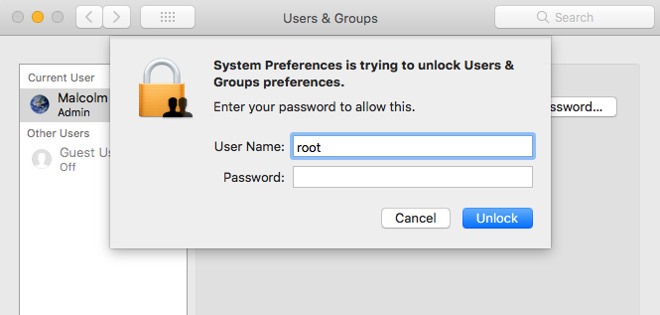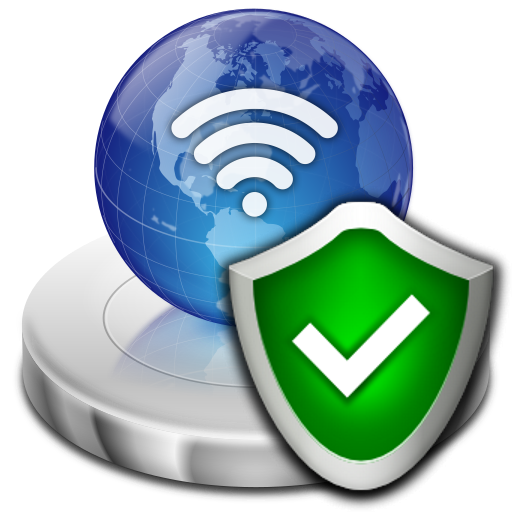NOTE:
The new BreakDroid rooting tool for Mac lets you automatically root your Android device, and in addition, it provides automatic ADB set up and installation of the Android SDK. ClockworkMod Tether is a USB tether solution for Mac, Windows, and Linux that allows you to use your phone's data connection to get internet access on your desktop or laptop. Root Call Blocker is the powerful app that can block unwanted calls, SMS and MMS at the system level. This app runs silently in the background and block the calls and messages quietly and they have no possibility to bother you. The app can also filter out the unknown, withheld and private numbers or calls from specific country or areas.
Between mid October 2019 and mid February 2020 everyone in the Army was migrated to use their PIV Authentication certificate for Email access. You no longer use the Email certificate for Enterprise Email or any CAC enabled websites
Mac users who choose to upgrade (or already have upgraded) to Mac OS Catalina (10.15.x) will need to uninstall all 3rd Party CAC enablers per https://militarycac.com/macuninstall.htm AND reenable the built in smart card ability (very bottom of macuninstall link above)
If you purchased your Mac with OS Catalina (10.15.x) already installed, you can skip the uninstall part above and follow the instructions below.
6 'high level' steps needed, follow down the page to make this a painless systematic process
| 1. | Is your CAC reader 'Mac friendly'? |
| 2. | Can your Mac 'see' the reader? |
| 3. | Verify which version of Mac OS you have |
| 4. | Figure out which CAC (ID card) you have |
| 5. | Install the DoD certificates |
| 5a. | Additional DoD certificate installation instructions for Firefox users |
| 6. | Decide which CAC enabler you want to use (except for 10.12-.15) |
Step 1: Is your CAC reader Mac friendly?
Visit the USB Readers page to verify the CAC reader you have is Mac friendly.
Visit the USB-C Readers page to verify the CAC reader you have is Mac friendly.
'Some, not all' CAC readers may need to have a driver installed to make it work.
NOTE: Readers such as: SCR-331 & SCR-3500A may need a firmware update (NO OTHER Readers need firmware updates).
Information about these specific readers are in Step 2
Step 2: Can your Mac 'see' the reader?
Plug the CAC reader into an open USB port before proceeding, give it a few moments to install
Step 2a: Click the Apple Icon in the upper left corner of the desktop, select 'About This Mac'
Step 2b: Click 'System Report..' (button)
Step 2c: Verify the CAC reader shows in Hardware, USB, under USB Device Tree. Different readers will show differently, most readers have no problem in this step. See Step 2c1 for specific reader issues.
Step 2c1: Verify firmware version on your SCR-331 or GSR-202, 202V, 203 CAC, or SCR-3500a reader. If you have a reader other than these 5, Proceed directly to step 3
Step 2c1a-SCR-331 reader
If your reader does not look like this, go to the next step.
In the 'Hardware' drop down, click 'USB.' On the right side of the screen under 'USB Device Tree' the window will display all hardware plugged into the USB ports on your Mac. Look for “SCRx31 USB Smart Card Reader.” If the Smart Card reader is present, look at 'Version' in the lower right corner of this box: If you have a number below 5.25, you need to update your firmware to 5.25. If you are already at 5.25, your reader is installed on your system, and no further hardware changes are required. You can now Quit System Profiler and continue to Step 3.
Step 2c1b-SCR-3500A reader
If you have the SCR3500A P/N:905430-1 CAC reader,you may need to install this driver, as the one that installs automatically will not work on most Macs. Hold the control key [on your keyboard] when clicking the .pkg file [with your mouse], select [the word] Open
Step 3: Verify which version of MacOS do you have?
(You need to know this information for step 6)
Step 3a: Click the Apple Icon in the upper left corner of your desktop and select 'About This Mac'
Step 3b: Look below Mac OS X for: Example: Version 10.X.X.
Step 4: Figure out which CAC (ID Card) you have
(You need to know this information for step 6)
Look at the top back of your ID card for these card types. If you have any version other than the six shown below, you need to visit an ID card office and have it replaced. All CACs [other than these six] were supposed to be replaced prior to 1 October 2012.
Find out how to flip card over video
Step 5: Install the DoD certificates (for Safari and Chrome Users)

Go to Keychain Access
Click: Go (top of screen), Utilities, double click Keychain Access.app
(You can also type: keychain access using Spotlight (this is my preferred method))
Select login (under Keychains),and All Items (under Category).
Download the 5 files via links below (you may need to <ctrl> click, select Download Linked File As.. on each link) Save to your downloads folder
Please know.. IF You have any DoD certificates already located in your keychain access, you will need to delete them prior to running the AllCerts.p7b file below.
https://militarycac.com/maccerts/AllCerts.p7b,
https://militarycac.com/maccerts/RootCert2.cer,
https://militarycac.com/maccerts/RootCert3.cer,
https://militarycac.com/maccerts/RootCert4.cer, and
Double click each of the files to install certificates into the login section of keychain
Progressive downloader for mac os x. Select the Kind column, verify the arrow is pointing up, scroll down to certificate, look for all of the following certificates:
DOD EMAIL CA-33 through DOD EMAIL CA-34,
DOD EMAIL CA-39 through DOD EMAIL CA-44,
DOD EMAIL CA-49 through DOD EMAIL CA-52,
DOD EMAIL CA-59,
DOD ID CA-33 through DOD ID CA-34,
DOD ID CA-39 through DOD ID CA-44,
DOD ID CA-49 through DOD ID CA-52,
DOD ID CA-59
DOD ID SW CA-35 through DOD ID SW CA-38,
DOD ID SW CA-45 through DOD ID SW CA-48,
DoD Root CA 2 through DoD Root CA 5,
DOD SW CA-53 through DOD SW CA-58, and
DOD SW CA-60 through DOD SW CA-61
NOTE: If you are missing any of the above certificates, you have 2 choices,
1. Delete all of them, and re-run the 5 files above, or
2. Download the allcerts.zip file and install each of the certificates you are missing individually.
Errors:
Error 100001 Solution
Error 100013 Solution
You may notice some of the certificates will have a red circle with a white X . This means your computer does not trust those certificates
You need to manually trust the DoD Root CA 2, 3, 4, & 5 certificates
Double click each of the DoD Root CA certificates, select the triangle next to Trust, in the When using this certificate: select Always Trust, repeat until all 4 do not have the red circle with a white X.
You may be prompted to enter computer password when you close the window
Once you select Always Trust, your icon will have a light blue circle with a white + on it.
The 'bad certs' that have caused problems for Windows users may show up in the keychain access section on some Macs. These need to be deleted / moved to trash.
The DoD Root CA 2 & 3 you are removing has a light blue frame, leave the yellow frame version. The icons may or may not have a red circle with the white x
| or | DoD Interoperability Root CA 1 or CA 2 | certificate | |
| DoD Root CA 2 or 3 (light blue frame ONLY) | certificate | ||
| or | Federal Bridge CA 2016 or 2013 | certificate | |
| or | Federal Common Policy CA | certificate | |
| or | or | SHA-1 Federal Root CA G2 | certificate |
| or | US DoD CCEB Interoperability Root CA 1 | certificate |
If you have tried accessing CAC enabled sites prior to following these instructions, please go through this page before proceeding
Clearing the keychain (opens a new page)
Please come back to this page to continue installation instructions.
Step 5a: DoD certificate installation instructions for Firefox users
NOTE: Firefox will not work on Catalina (10.15.x), or last 4 versions of Mac OS if using the native Apple smartcard ability
Download AllCerts.zip, [remember where you save it].
double click the allcerts.zip file (it'll automatically extract into a new folder)
Option 1 to install the certificates (semi automated):
From inside the AllCerts extracted folder, select all of the certificates
<control> click (or Right click) the selected certificates, select Open With, Other..
In the Enable (selection box), change to All Applications
Select Firefox, then Open
You will see several dozen browser tabs open up, let it open as many as it wants.
You will eventually start seeing either of the 2 messages shown next
If the certificate is not already in Firefox, a window will pop up stating 'You have been asked to trust a new Certificate Authority (CA).'
Check all three boxes to allow the certificate to: identify websites, identify email users, and identify software developers
or
'Alert This certificate is already installed as a certificate authority.' Click OK
Once you've added all of the certificates..
• Click Firefox (word) (upper left of your screen)
• Preferences
• Advanced (tab)
• Press Network under the Advanced Tab
• In the Cached Web Content section, click Clear Now (button).
• Quit Firefox and restart it

Option 2 to install the certificates (very tedious manual):
Click Firefox (word) (upper left of your screen)
Preferences
Advanced (tab on left side of screen)
Certificates (tab)
View Certificates (button)
Authorities (tab)
Import (button)
Browse to the DoD certificates (AllCerts) extracted folder you downloaded and extracted above.
Note: You have to do this step for every single certificate
Note2: If the certificate is already in Firefox, a window will pop up stating: 'Alert This certificate is already installed as a certificate authority (CA).' Click OK
Note3: If the certificate is not already in Firefox, a window will pop up stating 'You have been asked to trust a new Certificate Authority (CA).'
Check all three boxes to allow the certificate to: identify websites, identify email users, and identify software developers
Once you've added all of the certificates..
• Click Firefox (word) (upper left of your screen)
• Preferences
• Advanced (tab)
• Press Network under the Advanced Tab
• In the Cached Web Content section, click Clear Now (button).
• Quit Firefox and restart it
Step 6: Decide which CAC enabler you can / want to use
Only for Mac El Capitan (10.11.x or older)
After installing the CAC enabler, restart the computer and go to a CAC enabled website
Explore the world of Mac. Check out MacBook Pro, iMac Pro, MacBook Air, iMac, and more. Visit the Apple site to learn, buy, and get support. Mac id for pc. Finding Bluetooth MAC Address from the command line. The btinfo command displays a lot of information about your bluetooth adapter, including it's MAC Address. To display only the Bluetooth MAC Address run btinfo with the '-a' switch. Btinfo is not available on your system out of the box. It's a part of the freeware Bluetooth command line tools suite. MAC Address or media access control address is a unique ID assigned to network interface cards (NICs). It is also known as a physical or hardware address. It identifies the hardware manufacturer and is used for network communication between devices in a network segment. MAC Address usually consists of six groups of two hexadecimal digits.
NOTE: Mac OS Sierra (10.12.x), High Sierra (10.13.x), Mojave (10.14.x) or Catalina (10.15.x) computers no longer need a CAC Enabler.
Try to access the CAC enabled site you need to access now
Mac support provided by: Michael Danberry
I have a HTC phone need to be rooted, I’ve done a search on Google but I haven’t seen any instructions on how to do so on a Mac OS X, so I just ask for help. Could someone please point me in the right direction? Thanks! – Doug
You will hardly find the content over the internet about android root tool for mac, even the most popular root tool – Kingo can only support on Windows OS. But now with our new methods, it is very easy to root android devices with/without Mac OS X.
Part 1. Root Android Device on Mac
Option 1. Cydia Impactor



Cydia Impactor is a GUI tool for working with Android running Mac OS X. Its key feature is an end-to-end exploit of Android “Master Key” vulnerability, allowing mac android users to obtain root access on tons of Android devices including Samsung, HTC, Motorola, Huawei etc. android phones & tablets.
– Download Cydia Impactor to your Mac computer.
– Extract the file package and run Cydia Impactor.
– Enable USB Debugging on your Android device.
– Plug android device into Mac via USB cable.
– Select “# drop SuperSU su to /system/xbin/su” in the dropdown menu and click “Start”.
– Wait for a couple of minutes for the rooting process.
– Once done, download and install SuperSu to access your Android.
Note: Cydia impactor has been reported not compatible with three Android versions: HTC One on 4.2.2, Motorola Atrix 4D on 4.1.1, and Huawei Ascend Mate on 4.1, but it won’t harm the devices.
Option 2. Unrevoked
Some of root tools not working with all Android devices, like Unrevoked. But Unrevoked is a great one-click rooting tool which specially designed to root HTC devices, including HTC EVO 4G, HTC Hero, HTC wildfire, HTC Aira, HTC Desire, HTC Droid Incredible.
– Download and install the Unrevoked.
– Plug in your android phone to Mac.
– Be sure to enable USB debugging on your device.
– Open the Unrevoked rooting program.
– The root tool will start the rooting process once it detects your device.
– You phone will reboot when the program finishes.
– That’s it, enjoy your newly rooted HTC.
Part 2. Root Android Devices without Computer
Mac Os Root
If by any chance that you failed to root android devices with Mac, read on, here we also conclude some useful root tools to help you root android devices without Mac.
1. Universal AndRoot: It lets you root android devices without using a computer. This tool should work with most older android devices and firmware versions. If you have a phone/tablet with old android version, Universal AndRoot may be the best rooting tool for you.
2. V Root: This app is one of the best root application to root android device without any risk of hard brick. With it, you can easily root wide range of android phones and tablets without computer/laptop PC.
3. Towelroot: It is designed to root android smartphones like Galaxy S5, AT&T GS5, Nexus 5, GS4, Note 3, HTC One and many other latest android mobile devices without the need of computer.
4. Easy rooting toolkit: It is one of the most working app which developed by DooMLoRD. If you failed to root android with the tools mentioned above, the easy rooting toolkit may bring you some luck.
Kingo Root App For Mac
Notes & Tips:
– Before rooting an android on your Mac, make sure you backed up all your data.
– Make sure that your phone/tablet is charged at least 90%, in case that the root be interrupted in the middle of process.
– Be sure that your computer is set up with anti-virus and firewalls, the cable with the specific drivers must be ready.
– Lost important info on your device during root process? Relax, you can use Jihosoft Android Data Recovery for Mac to get them back.
– If you are Windows users who need to root android, the article – How to Root Android Your Devices may help.
– Let us know if you had any issues with “root android mac”. Feel free to shoot any questions below, any feedback is welcomed here.
Root App For Android 9
Related Articles
Root App For Pc
New Articles




